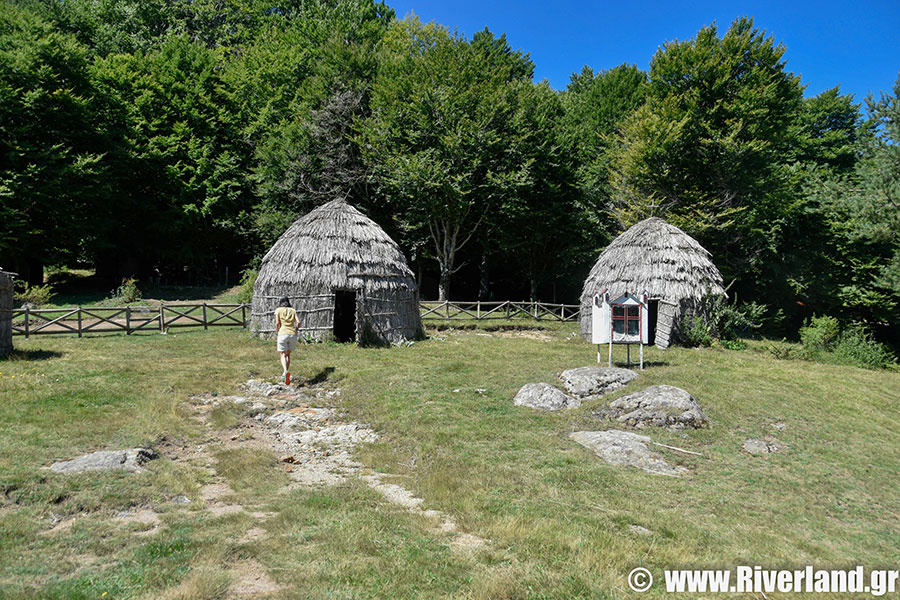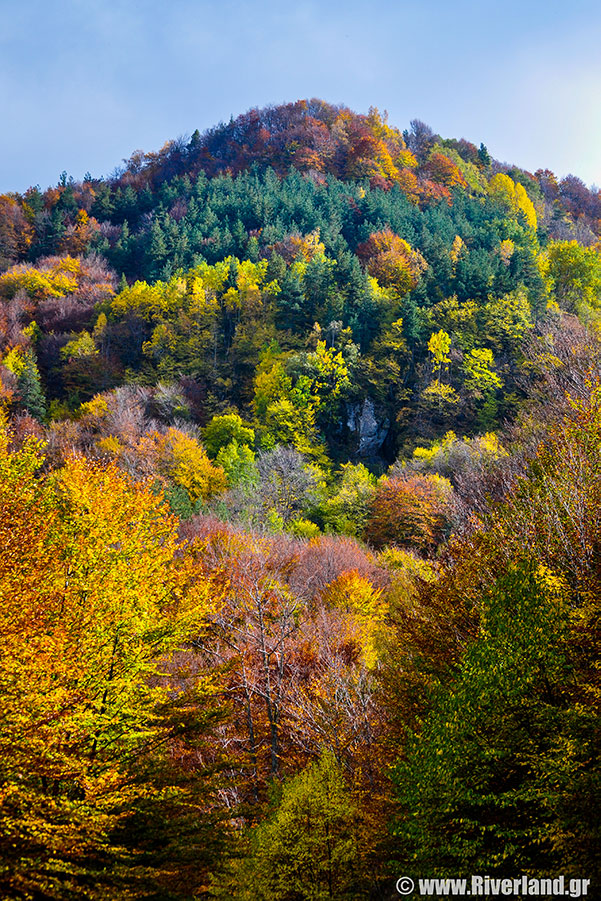
04 Aug In the magical world of Dryads
The mountain range of Central Rhodope is the crossroads of vegetation north and south.
The abandonment of settlements and nomadic livestock in the middle of the last century, left nature unhindered in its work, resulting in an unprecedented forest renaissance.
The fact that the Rhodope region in Greece did not “freeze” during the Ice Age (Pleistocene) makes it a botanical paradise for a variety of species since many species found refuge in the region while the rest of the European continent was under ice.
Starting from Xanthi, we drive to Stavroupoli. Built on the slopes of low hills, it seems to be the connecting link between Rodopi and Nestos. After our visit to the picturesque settlement, we leave behind the valley of Nestos and move north to the village of Livaditis. Shortly after the last houses of the village, the marked path that leads to the base of the waterfall begins. Hiking is extremely interesting as it unfolds between a dense beech and birch forest.
Nothing reveals the existence of the waterfall, except the sound of water falling from a height of 35 meters, making the hiker impatient for the time to face this magical creation of nature. The path that returns to the main road is uphill, but it is so beautiful, as our slow pace reveals the uniqueness of the forests of Rodopi.Arriving on the road we continue by car to the Forest Village of Erymanthos crossing the northern side of Antalophos.
From there, passing through the huts of Sarakatsani in Antamoma, we descend to Kallithea to return to Xanthi.

Following Nestos
Exploring the mountain range that forms the course of Nestos is the best opportunity to discover the hidden secrets of nature. Successive image changes in an impressive geomorphological relief with vertical slopes. abandoned mountain settlements, rich biodiversity and unique landscapes with wild horses grazing freely.
We depart for Toxotes and from there we head to the settlement of Imeron. We follow a mountain route with an impressive view of the plain of Xanthi and we climb the plateau of Achlada at an altitude of 800m.We quietly cross the meadow surrounded by an impressive beech forest in the hope of meeting a herd of wild horses in the area. Ascending the landscape changes completely with the stone being the dominant element as we move to the west side of Ahladovoun (Chal).
Low down we can see the valley of Nestos and Stavroupoli as we head towards Kromnikos, now crossing the dense oak forest.
Here the dirt road ends so that we can easily climb the Nestos observatory (viewing position) at 890m for a panoramic view of the Meanders and the Nestos Delta.
Our return to toxotes is downhill with several turns but a wonderful view.
From there in a southerly direction we follow the eastern embankment almost to the sea. The legendary “Great Forest” that surrounds the river creates an awe in anyone who wants to explore one of the last wildlife refuges. At several points along the way, the forest looks like a jungle, creating green “tunnels” of tall trees, giving the impression that the stories that even speak of lions that once lived here, have some logical basis. Even when the forest stops giving way to reedbeds and wetlands, the area continues to be enchanting.
Break for coffee overlooking Thassos, on one of the hills that remain remnants of the antennas of the radio station that operated there for over three decades and we continue to wander the wetlands returning to Xanthi in the afternoon.
Our trip ends with a delicious tour of the covered market of Xanthi where we will have the opportunity to participate in the preparation of our farewell meal following the instructions of a local housewife and making a traditional festive table. With the taste of tsipouro or the wines of the area but also of the famous sweets of the area, we say goodbye to Xanthi.



